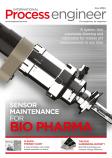Jan Büchsenschütz explains the challenges of modernising factories and how those can be overcome
Factories are notoriously difficult to update. Many have not had their equipment upgraded in decades, and as industries worldwide are being pushed to shrink innovation cycles and get new products out of the door quicker than ever, that innovation needs to be pushed through into the production processes themselves, or everyone loses out. Factory space is scarce and often entire sites must be rearranged to change a small component in the final product, which can represent a significant investment for many large manufacturers. To modernise a factory you first need to prepare an accurate model of the existing layout, but this can be expensive – approximately €7 to €8 per square metre – as these 3D models and renderings frequently need to be developed manually. This also still leaves room for human error, incurring even greater costs and delays.
As technology cycles become shorter to meet market demand, we must find a better solution. This challenge is also being pushed by the need to pursue green demands globally. For example, Volkswagen produces millions of cars annually, of which only 5.2% are currently all-electric vehicles (EVs). Many of their old production lines hark back to pre-1950, so if they are to repurpose those to produce more EVs and meet European climate goals, a serious shake-up of factory planning is required, and fast.
To overcome this problem and help factory planners optimise their factories in an efficient and cost-effective manner, we must look to artificial intelligence and digitalisation. Producing a digital rendering of the factory floor is the 21st century approach to factory planning, and it can be done using a single 3D scan supported by an advanced segmentation AI. The process of producing the virtual model is rapid and in a week can do what would previously have taken many months or even years. Once the digital rendering is created it can be manipulated, edited and new factory machinery and processes can be added to determine the most effective and optimal production pathways. The existing machinery in the factory can be moved, deleted and rearranged, optimising the much-needed space.
RIIICO has developed a deep learning AI that recognises specific pieces of machinery, their location and the relative distances between all the equipment, walls, boundaries and barriers. Throughout the design process the company knew that the individuals who can provide the most insight into factory optimisation are those on the shop floor, so its solution is designed to be easy-to-use and be used collaboratively by factory workers themselves. The technology is even able to compute hypothetical inputs, such as the impact of additional or different machinery. Using CAD data from machine manufacturers, these kinds of scenarios can be trialled in the rendering to determine which components are effective and which are not.
The AI that underpins this technology allows the firm to process vast quantities of visual data to efficiently create thousands of square metres of models. The difficulty lies in differentiating objects from each other. If there are two tables standing directly next to each other, does the AI understand that these are two tables, not a single large one? How many steel bars are on the factory ceiling? Where does the first bar start and end? Think about segmenting a collection of pipes. We humans may be able to intuitively recognise and categorise these shapes, but an AI can struggle. RIIICO has resolved these challenges, enabling visual 3D perception for computers on an industrial level.
The company's AI also overcomes other issues that other technologies have struggled with. Factory floor constraints such as floor space for staff, the presence of immovable objects and safety barriers, and pathways for autonomous vehicles are all taken into account and addressed before the plan is set in stone.
The company's work in this area has been steadily expanding over the past months, but this was accelerated significantly by it joining Hexagon’s Manufacturing Intelligence division’s Sixth Sense platform. RIIICO was recently selected as joint winners alongside New York-based SmartParts for the open innovation programme for manufacturing start-ups. Since winning the firm has been able to expand its networks, and having access to Hexagon’s broad customer base has aided it in unleashing its factory optimising software services to the world.
We live in a world where production cycles are getting shorter and factories are not being updated at the speed they need to be, and even when they are it can be an expensive and sometimes unsuccessful experience; almost 80% of factory upgrades never leave the ideation phase, while still incurring significant costs along the way. RIIICO makes factory planning simple, easy to use and cheaper, creating flexibility and resilience for the future. Issues that are plaguing the industry, such as supply chain crises, skills shortages and sustainability targets can all be mitigated with efficient factory planning. The company's mission is to unlock this factory planning for every stakeholder, from the blue-collar workers to the CEO
Jan Büchsenschütz is co-founder of RIIICO


















